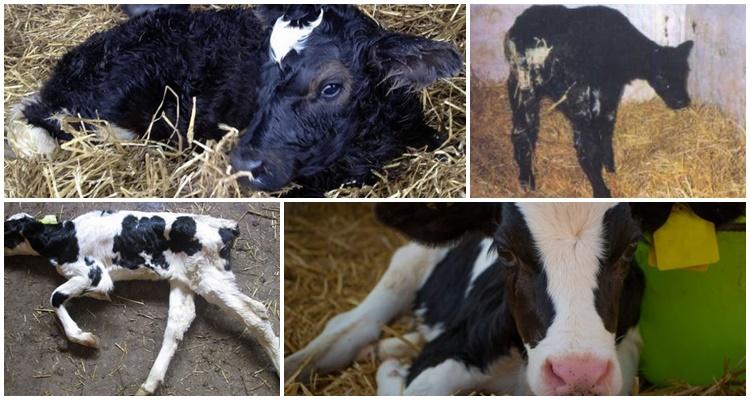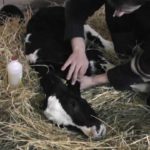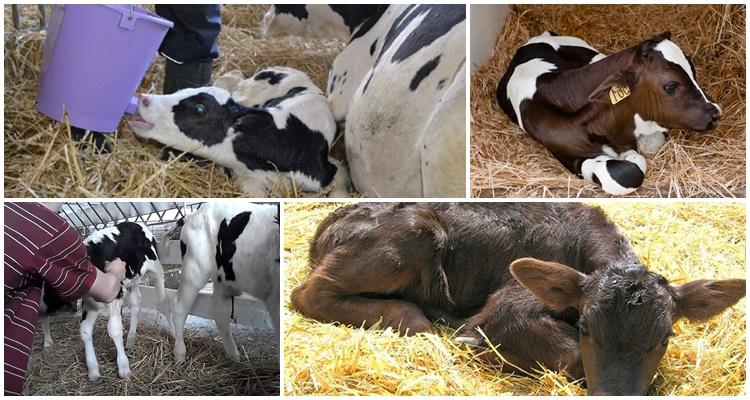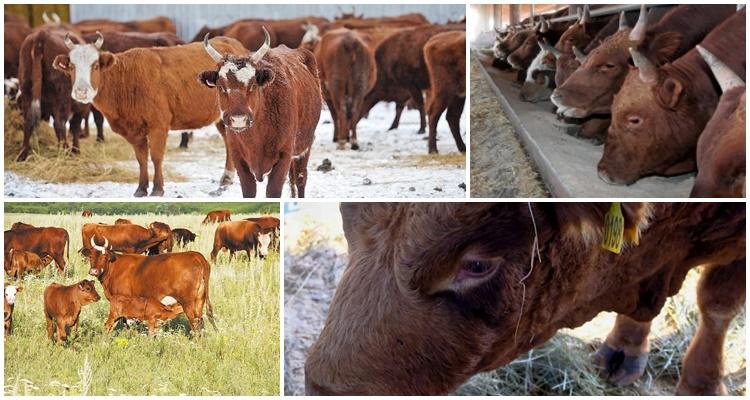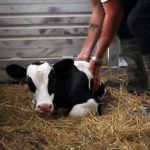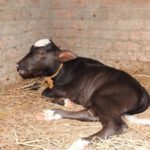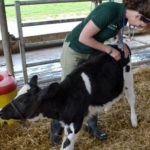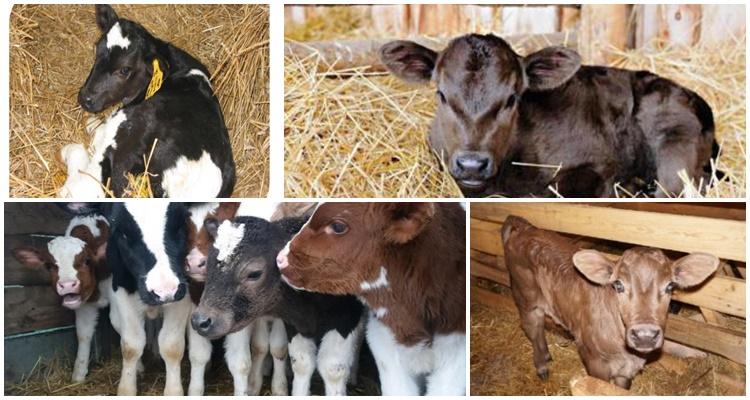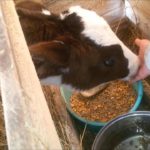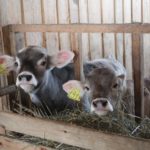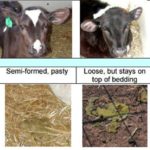Calf dyspepsia is a serious pathology characterized by digestive disorders, metabolic problems, and general intoxication. This condition is a real danger because it can cause dehydration. As a result, calves may die. To avoid such problems, you need to engage in disease prevention.
What kind of disease is this?
Dyspepsia is understood as a pathology that occurs in the first 10 days of a calves’ life. It is characterized by severe intestinal upset. The disease itself is not dangerous. However, a high percentage of deaths is due to severe dehydration and loss of beneficial elements.
In other words, dyspepsia is a toxic reaction of newborn calves to maternal colostrum. Its appearance is due to a lack of important substances during pregnancy. Another factor is considered to be insufficient development of the digestive organs in calves.
The first sign of the disease appears within the first 2 hours after the calf receives the first portion of colostrum. This leads to severe metabolic disorders, dehydration, and retarded growth and development. In this case, calves cannot digest mother's milk. If you don't help in time, most animals will die.
Causes
The key reason for the development of dyspepsia is considered to be violation of recommendations for raising and breeding animals. This may be poor nutrition or non-compliance with microclimate conditions. Another factor that causes the development of the disease is the insufficient development of the digestive organs. As a result, the intestinal pH is disrupted, toxic elements and putrefactive microflora are produced.
The main causes of problems include the following:
- improper nutrition of cows;
- lack of walking;
- late start;
- overfeeding calves;
- cold or sour colostrum;
- violation of sanitary and hygienic rules.
Forms and symptoms of the disease
Dyspepsia can have 2 forms - simple and toxic. In the first case, the calf looks lethargic and weak, it partially loses its appetite and seems depressed. The animal does not stand after birth.It constantly lies with its neck stretched out and shakes. Yellow diarrhea appears around day 2. At this stage, treatment always has a favorable prognosis and helps to completely eliminate the disease.
Toxic dyspepsia appears suddenly in the first days of life of newborns. At the same time, calves lose their appetite, their temperature drops, and their skin becomes cold. Diarrhea often contains mucus. If measures are not taken in time, the animal dies due to intoxication and dehydration.
The main sign of the disease is considered to be general weakness and depressed appearance. The calf also has diarrhea. Such signs appear at the first stage of the disease. Sick babies often lie on their side and look at their stomach. They may refuse colostrum partially or completely. In more difficult situations, calves begin to moan or moo. Their body temperature often decreases and their heart rate and breathing increase.
In complex cases of pathology, severe dehydration occurs. In this case, calves experience severe weakness, sunken eyes, and dry mucous membranes. Their fur becomes ruffled. Tremors in the body, loss of sensitivity, and dry skin often occur. Before death, the skin turns pale or blue. An increase in heart rate is also observed. The death of the animal usually occurs within 2-5 days.
Diagnosis of the problem
To make an accurate diagnosis, you need to assess the dynamics of the animal’s well-being over several days. With ordinary dyspepsia, calves experience weakness and decreased motor activity. The stool becomes yellow and has an unpleasant odor. There is also a risk of involuntary bowel movements. If you press on the belly, the calf will become nervous.
The appearance of such signs is grounds for contacting a veterinarian. The doctor will make a diagnosis based on the clinical picture and blood test. This test will help identify electrolyte abnormalities and low potassium levels. Also, with dyspepsia, leukocyte counts and ESR decrease.
Treatment regimen for calf dyspepsia
To cope with a simple form of the disease, it is recommended to follow these rules:
- discard the next 2 servings of colostrum;
- give warm saline solution with a concentration of 1%.
After 12 hours, the baby’s condition should recover. When diarrhea stops, the frequency of feedings is doubled. In this case, the serving size should be reduced by 2 times. During the week, nutrition should be returned to normal. It is recommended to give the calf 500 milliliters of saline before each meal. It should be at room temperature. It is important to note that it is forbidden to use ordinary sugar instead of glucose, as this will lead to a deterioration in the calf’s condition.
In case of a toxic form of the disease, you should do the following:
- cancel colostrum;
- on the first day, give saline solution to normalize digestive functions and restore water balance;
- on day 2, reduce the daily norm by half and give food in equal portions 4 times a day;
- use a course of antibiotics to suppress putrefactive microflora;
- Use sulfonamides to fight bacteria.
Nutrition correction
If simple or toxic dyspepsia occurs, it is not recommended to give colostrum to the calf. It should be replaced with saline solution.It is a solution of table salt with a concentration of 1%. The temperature of the liquid should be 38 degrees.
It is recommended to keep the calf on half the volume of colostrum for the next 3-4 days. The second half should be replaced with saline solution. It is also permissible to give decoctions of medicinal plants or rice. For a month after the illness, you need to continue to give saline and gradually restore your milk supply. It is recommended to give all liquids through a pacifier. This will help prevent excess milk from entering the body and prevent relapse of the disease.
Novocaine blockade
This procedure helps to cope with intense pain. In this case, it is recommended to administer the drug to the affected area. The choice of agent or their combination depends on the required duration of the effect and the degree of pain intensity. To reduce discomfort in the digestive tract, it is recommended to use 1 milliliter of novocaine solution with a concentration of 0.5% per 1 kilogram of body weight. The injection should be performed in the first hungry hole. Moreover, it is recommended to insert the needle 20-30 millimeters.
Compensatory treatment
In veterinary medicine, compensatory treatment is a treatment in which the functions of the affected organ are replaced by another. With the development of dyspepsia, compensation for intestinal function is required. To do this, the animal is given a solution of gastric juice with a concentration of 50%. It is recommended to do this 20 minutes before meals. The use of this tool helps to obtain the following results:
- compensate for enzyme deficiency;
- stimulate the functions of the pancreas and activate the synthesis of gastric juice;
- regulate acid-base balance;
- restore intestinal microflora;
- disinfect the digestive organs;
- facilitate the digestibility of milk.
To replenish the water-electrolyte balance, an electrolyte solution is required. To do this, you can buy ready-made drugs - for example, Regidron. You can also make the solution yourself.
Specific therapy
If the situation is complicated by infection or bacterial contamination, the calf must be treated with antibiotics, sulfonamides and nitrofurans. Antibacterial agents can only be prescribed by a doctor. Tetracycline is most often used for dyspepsia. It helps cope with most infections. The course of treatment lasts 4 days. In this case, the product should be taken 3-4 times a day.
Sulfonamides have an antibacterial effect. They also reduce inflammation and cope with the production of toxins. This group includes “Sulgin”, “Ftalazol”, “Ftazin”. Nitrofurans are needed to suppress gram-negative and gram-positive microflora. These include “Furacilin”, “Furagin”. The course of therapy lasts 3-4 days.
Folk remedies
To treat a calf, you can use herbal and enveloping decoctions. It is recommended to cook them for half an hour over low heat. Typically, a handful of plant materials is used per 2 liters of water. For dyspepsia, herbs that have an astringent effect are indicated. These include oak bark, elecampane, and St. John's wort. You can also use alder cones. Rice, flaxseeds, and oatmeal are used for enveloping decoctions.
Preventive actions
To prevent pathology, it is recommended to follow these rules:
- provide the cow with a sufficient amount of vitamins and microelements at the dry stage;
- after calving, provide the female with a balanced diet;
- observe sanitary and hygienic standards in the barn;
- maintain optimal room temperature;
- Isolate sick animals immediately.
It is recommended to start feeding the calf with colostrum only 1 hour after birth, and the food should come from a healthy cow. Dyspepsia is a rather complex pathology that often occurs in calves. To cope with it, it is recommended to immediately contact a veterinarian and follow his instructions.

